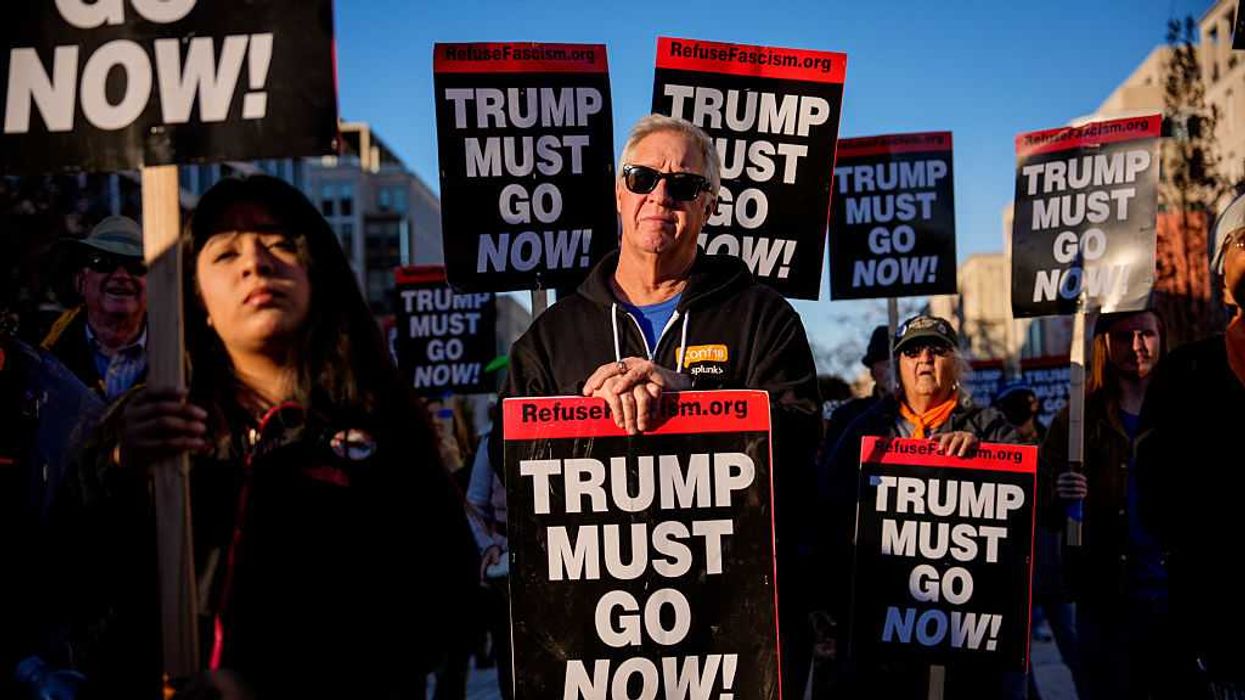In his 2025 inaugural address, President Donald Trump declared that his ‘proudest legacy will be that of peacemaker and unifier.’ These are admirable goals, especially in our extremely polarized environment. Indeed, the rhetoric of 'Make America Great Again' draws on idyllic imagery from a past era perceived as one of national cohesion and collaboration.
Some critics doubt that Trump really cares about social cohesion. But we should never stop holding our leaders responsible for what they say. So, we should ask: where is the plan to bring our country together? Where is the MAWA movement: Make America Whole Again?
At times, it seems that Trump’s strategy to unify is to improve the economy. But our hearts will not soften to each other with a sudden influx of cash. Polarization, after all, still exists among the prosperous and even among wealthy billionaires. As Robert F. Kennedy put it over fifty years ago: ‘Fellowship, community, shared patriotism—these essential values of our civilization do not come from just buying and consuming goods together.’
In his speech, RFK went on to propose that being employed creates a sense of purpose that leads to national unity. But polarization is a disease that doesn’t care if you are employed. In addition, the nature of work has changed from the time RFK was writing. Today’s workers may be sitting in their apartments behind a computer screen all day. How exactly would this give rise to community and fellowship?
Could a unifying plan just be pushing for policies that may be endorsed by most Americans, including Democrats? It’s not enough. President Biden also advocated for popular measures like infrastructure spending and universal background checks for gun purchases, but our nation was as divided as ever during his tenure.
The way forward is to return to a simple but powerful idea. There’s good evidence that our divisions are deepened by physical distance. This is called the ‘propinquity effect’ in psychology. Looking at each other in the eyes or reaching out for a handshake strengthens bonds and increases trust. In a world of texts and e-mails, real connections are diminishing, a trend that has only deteriorated since the pandemic. In addition, the lack of physical connection is not only contributing to disunity but to a larger problem of loneliness and depersonalization.
If Trump is serious about uniting the country and creating social cohesion, he should lead with vision and double down on investing in physical spaces where people can gather in real life. Parks, museums, libraries, community centers, and colleges can play this important role. Conservatives can even take this opportunity to pursue traditionalist and patriotic themes. By reconceptualizing these institutions as nation unifiers, we unlock a new value for them that we can tap for the benefit of the population. This isn’t a novel idea. These kinds of proposals are common in many countries, especially those recovering from painful divisions. They include Germany, South Africa, Colombia, and many others.
Unfortunately, conservatives have proposed serious cuts that put many domestic community programs in peril. Here are some examples:
Republicans are advocating billions of budget reductions to the Department of Housing and Urban Development. These cuts will impact Community Development Block Grants, which support local infrastructure projects, including community centers and public facilities. They will also impact the Choice Neighborhoods Initiative, which revitalizes community spaces.
In March, Trump issued an executive order to eliminate the Institute of Museum and Library Services, which is the primary source of federal funding for libraries and museums. Museums and libraries are places where community members can physically gather to educate themselves and strengthen community ties. The cuts are being litigated, but the effects are already being felt.
The National Parks Conservation Association has warned that 2025 budget cuts are leading to devastating staff shortages and reduced services at national parks, which are key spaces for shared experiences. A record of 330 million visits to national parks in 2024 highlights their role in fostering a sense of belonging and pride.
Finally, let’s talk about universities, which are a current hot-button topic. These institutions are financially reeling from punitive actions by the Trump administration. Although there are issues that need to be addressed, we should not forget the essential role that colleges play in fostering social cohesion. They bring people from different races and socio-economic groups into physical proximity to one another unified through common experiences and purpose. The ‘purpose’ is not just their own education but it is also about contributing to the creation and dissemination of new knowledge.
As a quick aside, Trump’s actions against universities are not a winning issue for him. Only 3 in 10 adults agree with his actions. And other conservatives understand the importance of backing our universities. Last year, Florida Governor DeSantis boosted university financing in his state, as did Georgia Governor Brian Kemp. These leaders know the value of investing in our colleges.
Conservatives will argue that financial expediency requires making cuts to the programs just discussed. This is short sighted, even on economic grounds, since social cohesion helps drive efficiency in markets. But independent of our financial needs, we should care about our well-being. Our lives would improve dramatically if our divisions were healed—if we could live in peace and harmony with our co-workers, neighbors, and relatives.
If Trump and other conservatives are serious about national unity, they should commit to a targeted national initiative focused on revitalizing America’s shared civic spaces. This may include the following ideas which could be implemented for a tiny fraction of our federal budget. This is an investment in America that would pay large dividends.
Restoring funding to museums, libraries, and community centers, especially in areas with high political polarization. For example, reinstating the Institute of Museum and Library Services with a 2026 budget of at least $300 million would reverse the March 2025 executive order’s damage, enabling state humanities councils and thousands of local institutions to resume community-building programs. Prioritizing grants for politically diverse regions, like swing states, could foster cross-partisan dialogue.
Launching a “United Spaces” grant program that is modeled on successful urban renewal efforts in other countries, aimed at creating parks and gathering places that bring diverse Americans into contact. This program, possibly funded through the Department of Housing and Urban Development, could support new community hubs, each designed for in-person civic events like town halls or cultural festivals, countering the digital isolation fueled by increased online interactions.
Investing in patriotic and traditionalist programming, such as civics education, veterans' memorial exhibits, or regional history projects that align with conservative values while building common ground. This could include funding community-led storytelling festivals that celebrate local and national histories, such as oral history projects capturing veterans’ experiences or immigrant contributions to America’s growth. Additionally, there should be support for “American Heritage Days” in parks and community centers, featuring family-friendly events like historical reenactments, constitutional workshops, or intergenerational mentorship programs where elders share traditional skills (e.g., craftsmanship, farming) with youth. These initiatives, backed by federal grants annually, could prioritize rural and urban areas with high polarization, encouraging diverse groups to connect through shared pride in the American identity.
Partnering with states and local governments to strengthen colleges, especially community colleges, as sites for upward mobility and cultural exchange. Trump could emulate GOP governors like DeSantis and Kemp by allocating federal matching funds to state university systems, incentivizing programs that bring students of different socio-economic backgrounds together for collaborative projects, such as entrepreneurship incubators or civic service initiatives.
Creating a bipartisan commission to identify new forms of public infrastructure that can promote civic trust. This commission, co-chaired by a Republican and a Democrat with a 12-month mandate, could propose innovative spaces like “American Unity Centers” that are equipped with AI tools for civic education but designed for in-person collaboration, ensuring technology serves rather than supplants physical connection.
Right now, Trump stands at a crossroads. He can allow the momentum of budget-slashing to continue eroding the very institutions that create unity—or he can lead a transformative effort to rebuild the physical commons of American life. If he truly seeks to unify the country as he promised, the path is clear: restore and reinvest in the spaces that bring us together.
N. Ángel Pinillos is professor and faculty head of philosophy at Arizona State University. He is the author of ‘Why We Doubt’ (Oxford University Press).




















